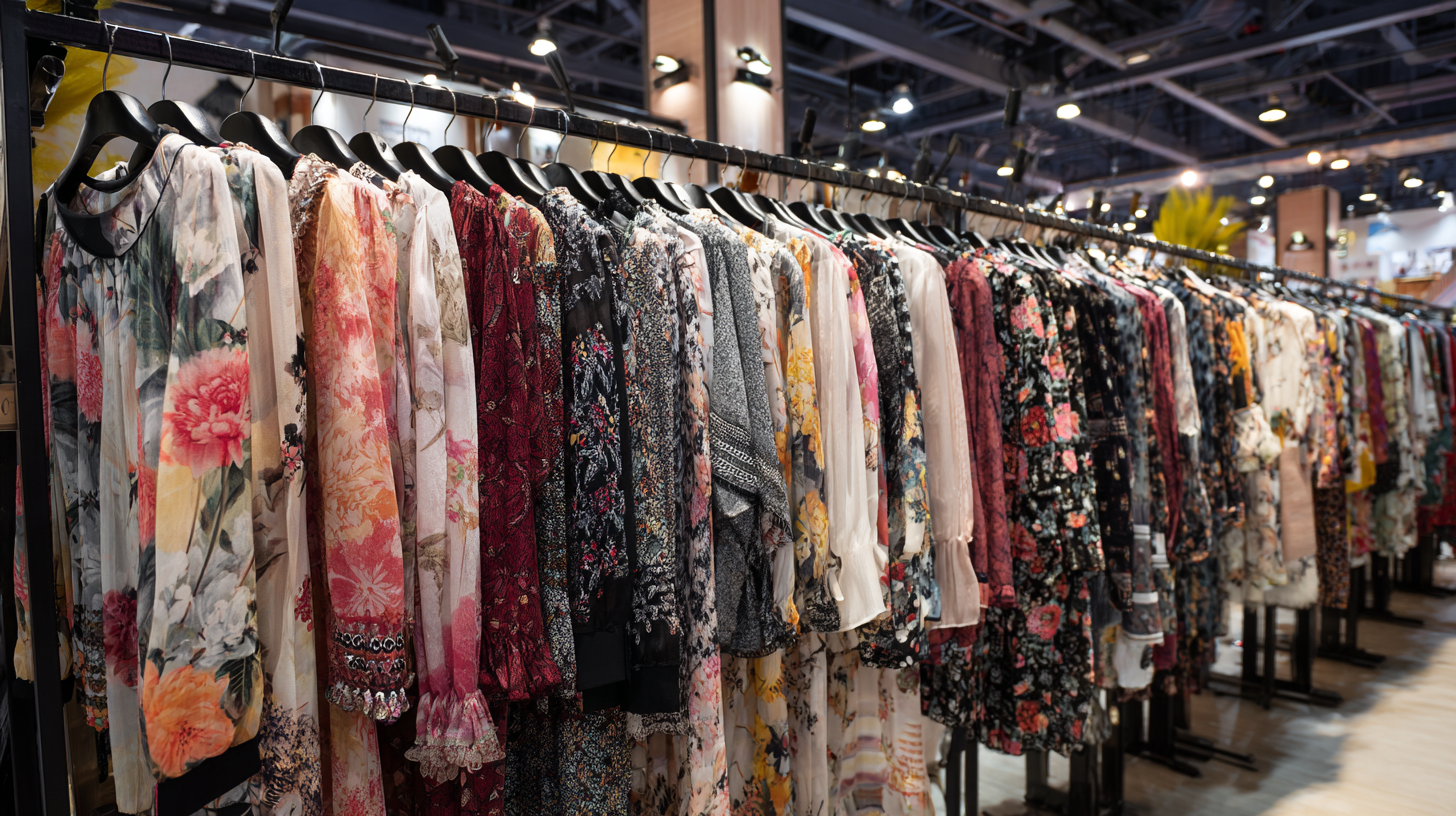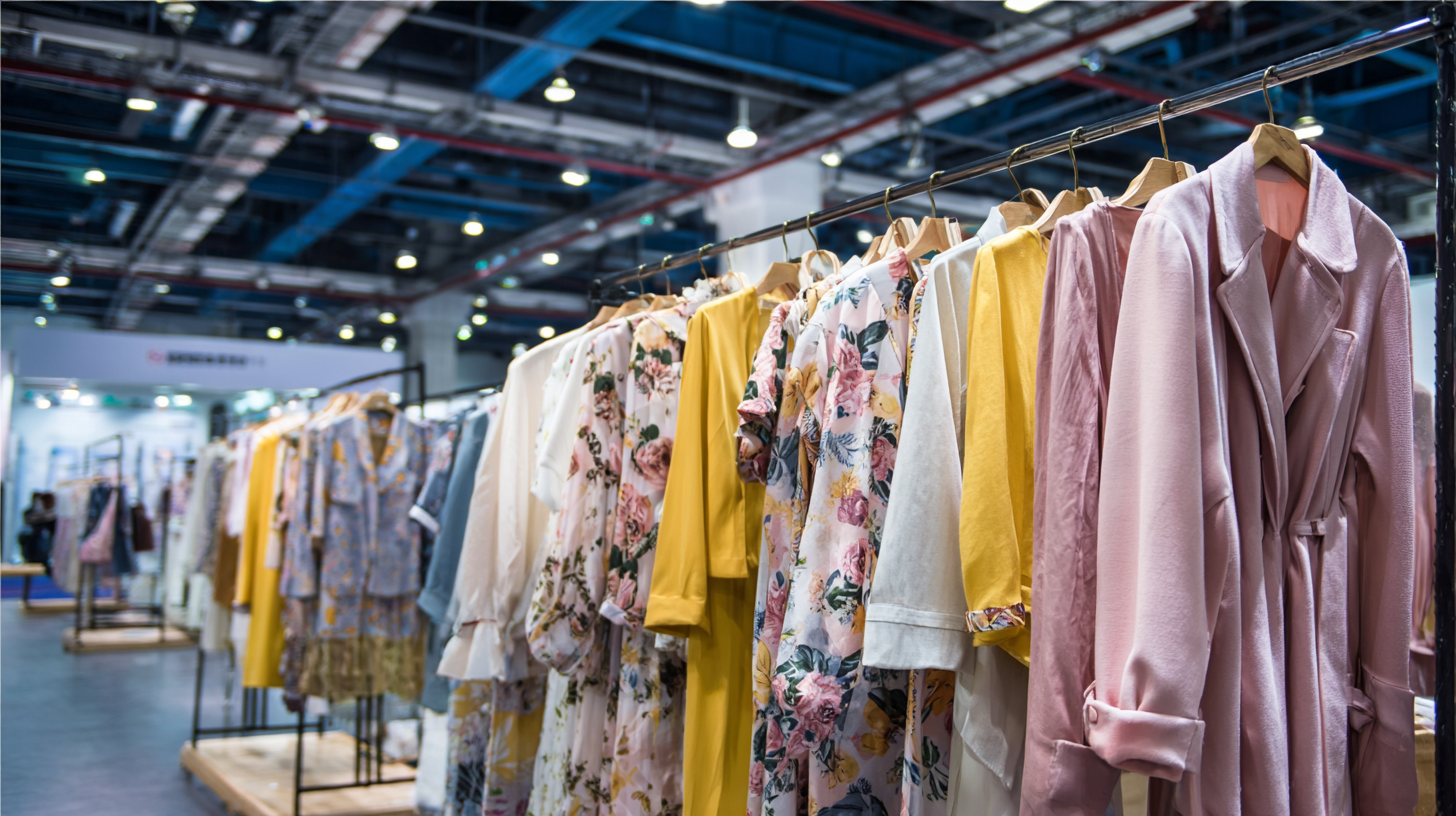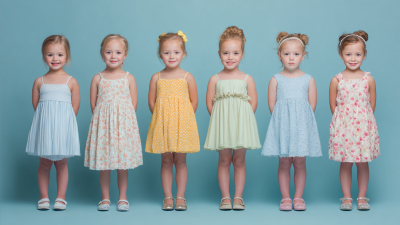Trends in Womens Clothing Market at the 138th Canton Fair 2025 Insights for Industry Growth
The 138th Canton Fair in 2025 presents a pivotal opportunity for industry stakeholders to explore the evolving trends in the womens clothing market. As one of the largest trade fairs in Asia, this event gathers numerous exhibitors and buyers, providing a comprehensive platform to showcase innovative designs, sustainable practices, and consumer preferences reshaping the womens clothing sector. With a keen focus on emerging trends such as eco-friendly materials, inclusivity in sizes and styles, and technological advancements in clothing production, the fair is set to highlight how the industry is adapting to the demands of modern consumers. Industry experts and participants will gain valuable insights that could drive growth and establish benchmarks for success in the competitive landscape of womens clothing. As we delve into the specifics of the fair, it becomes essential to understand how these trends not only reflect consumer behavior but also influence the future direction of women's fashion on a global scale.

Emerging Fashion Trends for Women at the 138th Canton Fair: A 2025 Overview
At the 138th Canton Fair, the women’s clothing market is showcasing a dynamic array of emerging fashion trends that reflect both innovation and cultural influences. Designers are increasingly leaning towards sustainable materials and eco-friendly production practices, appealing to a growing consumer base that prioritizes environmental responsibility. Fabrics made from organic cotton, recycled polyester, and innovative textile blends are making waves, marking a shift towards more conscious consumption in women's fashion.
In addition to sustainability, there is a noticeable emphasis on versatility and comfort. The trend for multifaceted garments allows women to transition effortlessly between work, leisure, and formal settings. Layered looks and athleisure styles are gaining traction, providing both practicality and chic aesthetics. Furthermore, vivid colors and bold patterns are seeing a resurgence, as brands embrace a more expressive approach to fashion. This celebration of individuality aims to empower women, encouraging them to express their unique styles through a diverse range of clothing options presented at the fair.
Trends in Women's Clothing Market at the 138th Canton Fair 2025
| Trend | Description | Target Audience | Projected Growth (%) |
|---|---|---|---|
| Sustainable Fashion | Focus on eco-friendly materials and ethical production. | Environmentally-conscious consumers | 25% |
| Athleisure Wear | Comfortable clothing suitable for both exercise and casual wear. | Fitness enthusiasts and casual wearers | 30% |
| Vintage Revival | Inspiration from past fashion trends, particularly the 90s and Y2K. | Young adults and nostalgic consumers | 20% |
| Gender Fluidity | Designs that are not constrained by traditional gender norms. | All gender identities | 15% |
| Tech-Integrated Clothing | Clothing featuring wearable technology for added functionality. | Tech-savvy consumers | 10% |
Market Size Dynamics of Women’s Clothing in China: Forecasting 2025 Growth Rates
The women's clothing market in China is poised for significant growth leading up to 2025, with dynamic shifts in consumer preferences driving changes in market size and dynamics. As economic conditions evolve, the demand for women's apparel is projected to rise, contributing to a more competitive landscape. Insights from various industry reports indicate that the overall apparel market—valued at approximately USD 1.77 trillion in 2024—will see substantial growth, with forecasts suggesting a potential increase to USD 2.26 trillion by 2030.
This upward trend in the women's clothing segment is not only a reflection of expanding market size but also influenced by emerging fashion trends and sustainability concerns among consumers. Retailers are likely to adapt their strategies, focusing on innovative designs and eco-friendly materials to capture the interest of a growing demographic that values quality and sustainability. As the industry navigates these changes, stakeholders will need to remain agile, leveraging market intelligence to optimize their offerings and ensure long-term growth in this vibrant sector.

Sustainability in Women’s Fashion: Key Insights from the Canton Fair
The women's clothing market is undergoing significant transformations, particularly in the realm of
sustainability, which has emerged as a crucial theme at industry events like the Canton Fair.
As the global fashion market is projected to expand to
$770.90 billion by the end of 2024 and continue growing towards
$1,183 billion by 2029, brands are increasingly prioritizing environmentally conscious practices.
This shift is reflected in the trends unveiled at the recent Canton Fair, where exhibitors showcased innovations that emphasize
eco-friendly materials and
ethical production processes, responding to consumer demands for sustainable fashion options.
In addition to sustainability, the influence of technological advancements, such as AI, is reshaping the industry's landscape.
The Fashion Trend Report for Spring/Summer 2026 highlighted how these technologies not only streamline production but also enhance personalization in customer experiences.
As brands align their strategies with changing consumer behaviors and values, the insights gained from the Canton Fair will play a pivotal role in guiding industry growth in the coming years,
offering a roadmap for successful adaptation in the competitive fashion market.
Technological Innovations Impacting Women’s Apparel: Trends from the 2025 Fair
The 138th Canton Fair in 2025 highlighted a
significant shift in the women’s apparel market driven by technological innovations.
Exhibitors showcased smart textiles
that can adapt to temperature changes, enhancing comfort and versatility.
Fabrics embedded with sensors enable real-time tracking of fitness metrics, appealing to
health-conscious consumers seeking multifunctional clothing that seamlessly transitions
from workout to casual wear.
Moreover, sustainable practices have become increasingly
prominent as brands incorporate recycled materials into their collections. This not only
addresses environmental concerns but also resonates with the growing number of eco-aware shoppers.
Innovations in manufacturing, such as 3D printing, allow
for greater customization, enabling consumers to personalize their garments. This trend towards
individuality, coupled with sustainable production methods, is set to redefine women's fashion,
making it more responsive to consumer demands and environmental considerations.
Consumer Behavior Shifts: What Women Want in Fashion Post-Pandemic at the Fair
The post-pandemic landscape has significantly transformed consumer behavior in the women’s clothing market, as highlighted during the 138th Canton Fair in 2025. With a renewed focus on comfort and practicality, women are increasingly seeking versatile fashion that blends style with functionality. This shift reflects a broader trend where consumers are prioritizing quality, sustainability, and durability over price, underlining a long-term change in purchasing mindsets. The desire for sustainable luxury products is on the rise, indicating that consumers are willing to invest in garments that not only enhance their wardrobes but also align with their ethical values.
Moreover, the pandemic has fostered new preferences as shoppers look for designs that resonate with their personal identities and lifestyles. As hybrid work models become the norm, women are gravitating towards fashionable loungewear and adaptable pieces suitable for both home and outings. The insights gained from the fair reveal a clear demand for brands to innovate in their offerings, catering to this evolving consumer mindset which emphasizes self-expression, comfort, and social consciousness in fashion choices.






